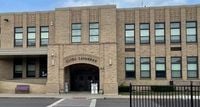In classrooms across New York and Delaware, a quiet revolution in language education is taking root—one that doesn’t require a single spoken word. At both Indian River High School and Clyde-Savannah School District, American Sign Language (ASL) is emerging as a popular and meaningful alternative to traditional foreign language courses, reflecting broader shifts in educational priorities and community engagement.
On November 24, 2025, students at Indian River High School found themselves immersed in a new kind of language class. Unlike Spanish or French, this course involves no spoken words. Instead, hands, faces, and body movements do the talking. According to Bay to Bay News, these students are learning American Sign Language—a language that, for many, opens new doors to communication and understanding.
Meanwhile, over in the Clyde-Savannah School District, a similar story is unfolding. As reported by WayneTimes.com, students there now have the option to take ASL to fulfill their language credit requirements. The program, spearheaded by teacher Genevieve Callejo, is more than just a class; it’s a vibrant, expressive experience that’s quickly becoming a highlight of the school day for many.
Callejo’s approach is unique. Drawing from her background in deaf theater, she infuses lessons with visual learning techniques, making the language accessible and engaging regardless of students’ prior experience. It’s not just about memorizing vocabulary or grammar rules—it’s about immersing oneself in a culture and a mode of communication that’s as expressive as it is inclusive.
“Genevieve Callejo’s expressive, student-centered style makes the class a highlight of their day,” WayneTimes.com notes, reflecting the enthusiasm that many students are feeling. For some, ASL is the first language class that truly clicks, offering a hands-on, visual alternative to the more traditional, textbook-driven courses.
The decision to launch the ASL program in Clyde-Savannah was driven by several factors. First, there’s a practical concern: a shortage of certified language teachers has made it increasingly difficult for districts to offer a wide range of spoken language options. ASL, with its growing body of certified educators and robust curriculum resources, offers a compelling solution.
But there’s more to it than logistics. The region boasts a strong Deaf community, and the new program is a nod to that heritage. By teaching ASL, the district is not only giving students a valuable skill but also fostering greater awareness and respect for Deaf culture—a move that has been warmly received by both students and community members alike.
“The program was launched to address a shortage of certified language teachers and to reflect the region’s strong Deaf community,” WayneTimes.com reports. It’s a pragmatic response to a staffing challenge, but also a progressive step toward inclusivity and cultural literacy.
Students are responding with enthusiasm. Many say that Callejo’s lively teaching style and the inherently interactive nature of ASL make the class fun and memorable. The district, taking note of this excitement, is already considering ways to expand the program as interest continues to grow.
“The district hopes to expand the program as interest grows,” WayneTimes.com adds, signaling that ASL could soon become a fixture in the school’s language offerings—perhaps even inspiring other districts to follow suit.
Back at Indian River High School, the introduction of ASL represents a significant shift in how language learning is approached. According to Bay to Bay News, students there are embracing the challenge of learning to communicate without speaking. The experience is not only about acquiring a new language; it’s about developing empathy, patience, and a deeper understanding of how people connect without words.
Why is this trend catching on now? One reason is the growing recognition that language is about more than just words—it’s about bridging gaps between communities and fostering inclusion. As more schools grapple with teacher shortages and changing student interests, ASL offers a fresh alternative that aligns with both practical needs and broader social values.
Nationally, the popularity of ASL has been on the rise for years. Universities across the United States now accept ASL for foreign language credit, and high schools are increasingly following suit. This shift reflects a changing understanding of what it means to be multilingual and culturally competent in a diverse society.
For students, learning ASL is about more than just meeting a graduation requirement. It’s a chance to connect with a community that has historically been marginalized, to develop new ways of thinking, and to acquire a skill that can serve them in countless ways—whether in future careers, volunteer work, or everyday life.
Teachers like Genevieve Callejo are at the forefront of this movement. By blending theater techniques, visual cues, and a student-centered approach, she’s helping to demystify ASL and make it accessible to all. Her classes are more than just lessons; they’re performances, conversations, and explorations of what it means to communicate without speaking.
The impact of these programs extends beyond the classroom. As students become more fluent in ASL, they’re better equipped to interact with Deaf peers, family members, and community members. This, in turn, helps to break down barriers and build a more inclusive environment—one where everyone has a voice, even if it’s not spoken aloud.
Administrators are taking note. The success of the Clyde-Savannah program, coupled with the positive response at Indian River, suggests that ASL could soon become a staple in schools across the region. As districts look for innovative ways to meet language requirements and promote diversity, ASL stands out as a compelling option.
Of course, challenges remain. Expanding ASL programs will require investment in teacher training, curriculum development, and community outreach. But the early results are promising, and the momentum is building.
As the school year unfolds, students at Indian River, Clyde-Savannah, and beyond are discovering that language is about more than words—it’s about connection, creativity, and understanding. In the quiet hum of their classrooms, a new kind of conversation is taking shape—one that speaks volumes, even in silence.




